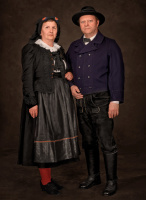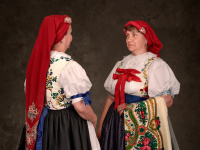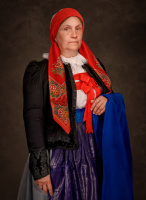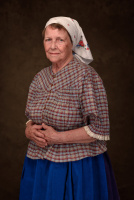The Forgotten German-language Island
The German history of the Czech borderlands is quite well known, but less is said about the language island in the Vysočina Region, specifically in the Horácko region. Around Jihlava, on the very border of Bohemia and Moravia, there are about eighty villages where Czech and German naturally coexisted until the end of World War II. German-speaking settlers arrived in the area as early as the Middle Ages. In Jihlava and many surrounding villages, German was almost exclusively the spoken language until the end of World War II, when the German population was expelled.
In the regions of Německý Brod (today Havlíčkův Brod), Štoky, and Polná, Czech and German folk cultures also blended. People played homemade violins known as "skřipky" (also "dyndáky") with a typically creaky sound. Women primarily danced specific circle dances during musical breaks and, together with men, performed dance sets called "hačó". Another characteristic was "tušování" a group dance of men and women accompanied by song. These were, naturally, Czech-German songs known as "Mischlieder" or mixed songs. The language also blended in the terminology of traditional costume parts – for instance, a "Scharkarock" (in Czech "šarka") was a skirt, and "die Pline" (in Czech "plína") was worn on the head.






